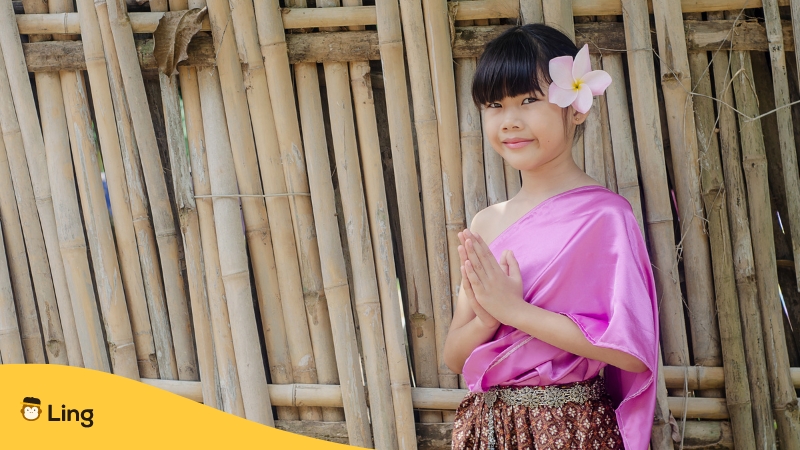You’ve delved headfirst into learning the Japanese language, tackling Hiragana, Katakana, and even some Kanji characters, all the while savoring every delicious syllable of sushi, sashimi, and sake. Suddenly, you’re hit with a curveball of a question: “Is Japanese related to Thai?” Now, both languages might seem far-flung, but before you scoff at the idea, let’s embark on a linguistic odyssey to discover the connections and contrasts between these two exotic tongues.
What Is The Japanese Language About?
Fancy a peek into the realm of the Japanese language? Put on your linguistic explorer hats as we embark on a concise tour to reveal the exclusive aspects that make Japanese stand head and shoulders above the linguistic crowd.
Firstly, the family tree of the Japanese language is more of a minimalist bonsai than a sprawling oak – it’s a core member of the Japonic family, sharing scant relations within this exclusive club. It’s the kind of soloist attitude that makes learning Japanese feel a bit like scaling an intriguing linguistic Everest.
Now, hold onto your seats as we zoom into one of the most fascinating aspects: the three-script writing system. With Hiragana and Katakana, the syllabic siblings having 46 characters each, and Kanji, the logographic heavyweight with around 2,000 commonly used characters, Japanese presents a kaleidoscope of linguistic versatility. It’s like painting a Picasso with a unique blend of art tools.
But the allure of Japanese doesn’t stop at its scripts. Japanese showcases a pitch-accent system that makes the language play out like an unfolding symphony. With this system, a subtle shift in tone breathes new life into a statement, modifying meanings on the fly, like a magician pulling a rabbit out of a hat.
What Is The Closest Language To Japanese?
When it comes to languages, Chinese and Japanese may not be siblings, but they certainly share a meaningful bond. The link? Kanji ideograms. Born in China, these Kanji characters migrated across Asia, finding a new home in the Korean peninsula and Japan.
Despite the transformation they underwent—like explorers adapting to new environments—the Chinese and Japanese remain interconnected through this shared script. Think of it as a linguistic handshake.
Of note, Chinese employs more Kanji characters than Japanese, implying an impressive Kanji vocabulary. But the twist lies in the mutual understanding. Approximately 70-80% of these shared characters express similar meanings in both languages. A wonderfully shared lingual commonality!
So, while the Japanese might seem isolated, its connection with the Chinese, as showcased by their shared Kanji script, remains robust. It’s a relationship that enlightens and enriches both, proof of how languages, much like people, are shaped by shared narratives.

What Is The Thai Language About?
Ever listened to Thai and marveled at its rhythmical lilt and eyebrow-raising tonality? A wonder to the ear and a challenge to the tongue, Thai beckons in a melodious voice that’s worth answering. Let’s switch on our brain light and explore this enigmatic language.
Part of the Tai-Kadai family, the Thai language — also known as Siamese or Central Thai — is the national language of Thailand. It’s said this family split from the same tree as the Chinese, making them distant cousins. However, the family reunion is pretty limited, as the Thai language’s closest relatives are other languages spoken in Thailand and Laos.
Switching gears to writing, Thai script could be the visual equivalent of a techno party with its fascinating letters, tone marks, and vowel symbols. This alphabet, derived from ancient Khmer, goes toe-to-toe with any linguistic Picasso, with 44 consonants, 15 vowel symbols, and 5 tonal marks used to represent 28 vowel sounds.
But here’s the showstopper – Thai is a tonal language with five distinct tones. One syllable can have many meanings based on the tone you nail – sort of like a musical choose-your-own-adventure. For instance, the syllable ‘mai’ can range from ‘new’ to ‘silk’ to ‘no’, depending on the tone. Bet you can’t wait to ‘tone-tango’ with Thai!
Let’s nod to its cherished system of politeness too. Thai incorporates social context and gender into its language use. There are formal, informal, and humble versions, plus distinct words and endings used by male and female speakers. Imagine having a different linguistic wardrobe for every occasion!
What Is The Closest Language To Thai?
The closest linguistic relative to Thai is not far to find: it’s the Lao language. Originating from the same Tai language family, these two languages share remarkable similarities.
Though distinct in their systems (Thai has five tones, Lao six), their mutual intelligibility is high. Brimming with a shared vocabulary and similar phonology, these languages are not just ‘language-adjacent’ but feel more like ‘language siblings.’ Understanding one significantly eases the path to learning the other—bearing testament to their deep-rooted linguistic bond.

Is Japanese Related To Thai?
When you examine the linguistic ropes of Japanese and Thai languages, it’s inevitable to see a web of complexities and idiosyncrasies. Through the microscope of linguistics, despite having a few overlaps, these languages present intriguingly diverse characteristics. Let’s unweave this thread and discover the truth.
The Japanese Language: Tucked away in its corner of the linguistic space, Japanese is the star of the Japonic family. Its only close siblings are the Ryukyuan languages. The Japanese language plays by its own rules with a unique trio of scripts (Hiragana, Katakana, and Kanji) and a dynamic pitch-accent system that can change meanings faster than you can say Konnichiwa!
The Thai Language: Radiating its linguistic charm from Southeast Asia, Thai belongs to the Tai-Kadai family. Its backdrop is a stunning montage of five tonalities, a Khmer-inspired script, and a layered system of politeness integrated tightly with social contexts and gender.
And now for the million-yen (or baht!) question—are they related?
Linguistic studies assert that these two fascinating languages are not related. The separation boils down to different language roots, distinct writing systems, and divergent use of tones. Even the fact that they both have some sort of tonal vibe doesn’t establish a sibling bond between Japanese and Thai, as the tones interact with their respective languages in entirely different ways.
Learn The Japanese Language With Ling
Now, are you inspired to befriend the beguiling Japanese language and make your own linguistic mark? Well, fear not, dear reader! Let us introduce you to a digital sensei that’s tailor-made for your learning journey.
Take a leap into the world of Ling! With the Ling app, you’ll be immersed in a fun and engaging experience while perfecting your Japanese skills. With it, you can finally toss aside the language barrier and ignite your passion for learning!
Don’t play the waiting game—hop on to the App Store or Play Store today, download Ling for free, and watch as your Japanese prowess blossoms! Set forth, language aficionado, and conquer the linguistic landscape with flair!


































































